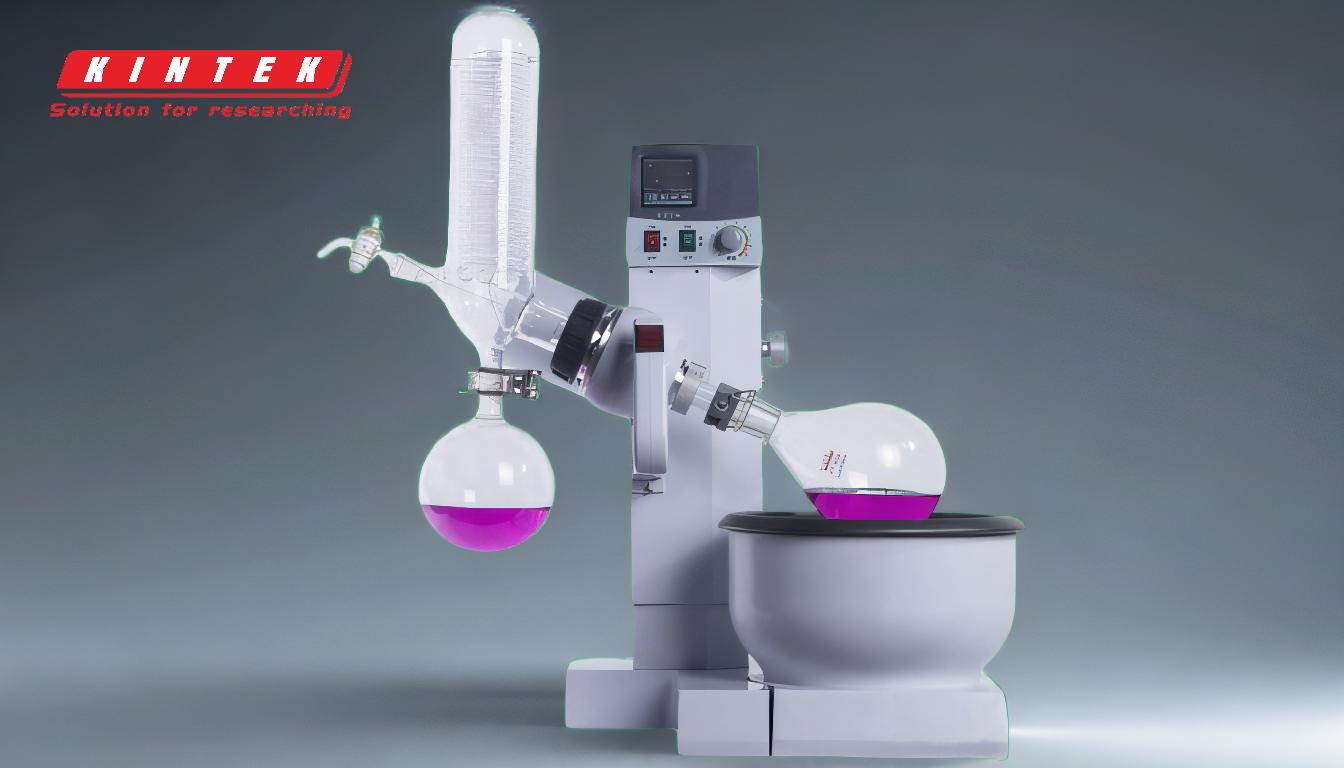Rotovapping diethyl ether is a common laboratory technique used to remove the solvent from a solution under reduced pressure and controlled temperature. Diethyl ether is a highly volatile and flammable solvent with a low boiling point (34.6°C), making it suitable for rotary evaporation. However, due to its flammability and volatility, specific precautions must be taken to ensure safety and efficiency. The process involves using a rotary evaporator (rotovap) to evaporate the ether under vacuum, condense it, and collect it in a separate flask. Below is a detailed explanation of the key considerations and steps involved.
Key Points Explained:

-
Feasibility of Rotovapping Diethyl Ether:
- Yes, diethyl ether can be rotovapped. Its low boiling point makes it ideal for evaporation under reduced pressure. However, its high volatility and flammability require careful handling and specific safety measures.
-
Equipment and Setup:
- Rotary Evaporator: Ensure the rotovap is in good working condition, with no leaks in the vacuum system.
- Vacuum Pump: Use a vacuum pump capable of achieving the necessary pressure reduction to lower the boiling point of diethyl ether.
- Water Bath: Set the water bath temperature slightly below the boiling point of diethyl ether (e.g., 25–30°C) to avoid overheating and potential ignition.
- Condenser: Use a condenser with a cooling medium (e.g., ice water or a chiller) to efficiently condense the evaporated ether.
-
Safety Considerations:
- Flammability: Diethyl ether is highly flammable and can form explosive peroxides over time. Work in a well-ventilated fume hood and away from open flames or sparks.
- Peroxide Formation: Check for peroxide formation before use. If peroxides are present, do not rotovap the ether, as it can lead to explosions.
- Vacuum Leaks: Ensure the rotovap system is airtight to prevent the release of ether vapors into the lab environment.
- Cooling System: Use an efficient cooling system to prevent ether vapors from escaping into the vacuum pump or the environment.
-
Process Steps:
- Preparation: Add the solution containing diethyl ether to the rotovap flask. Ensure the flask is securely attached to the rotovap.
- Vacuum Application: Gradually apply vacuum to the system to lower the pressure and initiate evaporation. Avoid sudden pressure drops, as this can cause bumping.
- Rotation: Start rotating the flask to increase the surface area for evaporation and prevent bumping.
- Temperature Control: Maintain the water bath temperature slightly below the boiling point of diethyl ether to ensure controlled evaporation.
- Condensation: The evaporated ether travels to the condenser, where it is chilled and liquefied, then collected in the receiving flask.
- Completion: Once all the ether has been evaporated, release the vacuum slowly and remove the receiving flask containing the condensed ether.
-
Advantages of Rotovapping Diethyl Ether:
- Efficiency: The process is fast due to the low boiling point of diethyl ether.
- Preservation: The gentle evaporation under reduced pressure helps preserve heat-sensitive compounds in the solution.
- Solvent Recovery: The condensed ether can be collected and reused, reducing waste and cost.
-
Limitations and Challenges:
- Safety Risks: The high flammability of diethyl ether requires strict adherence to safety protocols.
- Peroxide Hazards: Ethers can form explosive peroxides, especially if stored for long periods or exposed to light and air.
- Equipment Requirements: A properly functioning rotovap with a reliable vacuum pump and cooling system is essential.
-
Best Practices:
- Work in a Fume Hood: Always perform the procedure in a fume hood to ensure proper ventilation and minimize exposure to ether vapors.
- Check for Peroxides: Test the ether for peroxides before use, especially if it has been stored for an extended period.
- Monitor the Process: Continuously monitor the rotovap during the process to detect any leaks, overheating, or other issues.
- Proper Disposal: Dispose of any waste ether or peroxide-containing residues according to local regulations.
In summary, rotovapping diethyl ether is a feasible and efficient method for solvent removal, provided that proper safety measures and equipment are in place. By following the outlined steps and precautions, you can safely and effectively concentrate or recover diethyl ether from your solutions.
Summary Table:
| Aspect | Details |
|---|---|
| Feasibility | Diethyl ether can be rotovapped due to its low boiling point (34.6°C). |
| Equipment Required | Rotary evaporator, vacuum pump, water bath, condenser with cooling medium. |
| Safety Precautions | Work in a fume hood, check for peroxides, ensure airtight system, and use efficient cooling. |
| Process Steps | Preparation, vacuum application, rotation, temperature control, condensation, completion. |
| Advantages | Fast, preserves heat-sensitive compounds, solvent recovery for reuse. |
| Challenges | High flammability, peroxide formation risks, equipment requirements. |
| Best Practices | Monitor process, ensure proper disposal, and follow safety protocols. |
Need help with rotovapping diethyl ether? Contact our experts today for personalized guidance!









